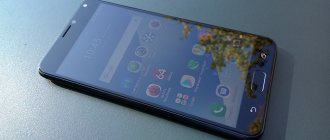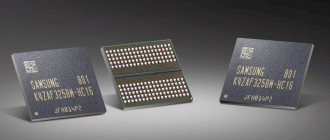Why do manufacturers install it?
Dual camera technology can significantly improve the quality of your photos. To do this, two matrices are installed in the device at once: the main one and the auxiliary one. As a rule, the second one offers less quality, so only the first one performs the main task.
To do this, manufacturers use an expensive matrix to capture images with the best color rendering performance. It is also responsible for contrast and dynamic range.
A more economical matrix is used as an auxiliary camera, complementing the capabilities of the first with several interesting advantages. Its task is to improve image detail. In addition, it allows you to correctly determine the distance to the object, improves the quality of the zoom, and also adds some additional functions.
Both sensors work independently, creating the same photo from two slightly different angles. Processing, gluing and overlay of results is done by the processor, thus reducing the amount of background noise.
Dual cameras in smartphones: what are they good for and how do they work?
Last February, I already blogged about how dual cameras would become a new trend in the world of smartphones. This is, in fact, what happened (I’m not a leading analyst, if anything, it was just obvious :)). In the end, mobile photography needs to be developed somewhere; simply increasing megapixels is ineffective. And since the physically small size of phone camera sensors and limitations on optics do not allow “turn around,” we have to look for alternative solutions. Today, HTC, LG, Huawei, Xiaomi, ASUS, ZTE, Lenovo and, of course, Apple have flagships with dual cameras (of course, not only them). Perhaps only Samsung for some reason ignored this trend. Possibly due to technical problems. After all, recently there was news that the early prototype of the Galaxy S8 still had a dual module.
It should be noted that the technology itself is not new. If you remember, in 2010-2011 there was a boom in home 3D. And this affected not only televisions, but also smartphones. The HTC Evo 3D and LG Optimus 3D models were equipped with dual camera modules for shooting 3D video, and their screens displayed glasses-free 3D content. This trend has not caught on in the market even with regard to televisions. And the phones produced a “blind-eyed” image and no one liked them. Dual cameras were used only for creating stereo photos and videos. But the benefits of technology are actually greater.
What's good about two main cameras?
Firstly, two cameras expand the “field of view”. If there is only one module, then it is universal - suitable for both landscape photography and macro photography. But the second module can be installed with a wide viewing angle and shoot cool panoramas without “software” gluing.
Secondly, the dual module increases the clarity and contrast of photos. Each camera may shoot slightly differently, emphasizing different details. The two frames are then combined to create the perfect picture.
Thirdly, optical zoom. If desired, it can be installed for one camera module, but this will increase the size of the smartphone, which is not good for the manufacturer. When there are two lenses, one can be wide-angle (captures more in the frame), and the second can be long-angle (sees further). This way you can get 2-3x zoom without compromising image quality.
Well, fourth - beautiful bokeh (background blur). In principle, smartphones with one module can do something similar, but with dual cameras the effect is much better. This is because the first camera focuses on the selected object, and the second effectively blurs the background. The pictures are then stitched together.
That's all the main advantages of dual modules. However, each manufacturer implements the technology differently, so let's dive into the specifics.
Apple's approach
As you know, only the older iPhone - 7 plus - is gifted with a dual camera. First of all, with this step Apple solved an important problem in the mobile world - the difficulty of using full optical zoom. As described above, the second camera has a long focal length lens and, compared to the first, provides zoom without digital zoom. Everything works very clearly, thanks to the software.
The fact that the two cameras have different focal lengths also benefits from the option of shooting portraits. Again, I already wrote about this “feature” above - images from two cameras are combined, as a result, the object being photographed is as clear as possible, and the background is artistically blurred. Maybe sometimes the effect seems too “artificial”, but still the two cameras implement it much better than purely software solutions.
Apple also has imitators. The new ASUS Zenfone 3 Zoom (introduced earlier this year) also has a dual camera. And unlike its predecessor, the ZenFone Zoom (which used a multi-lens system) provides 2x zoom purely due to different focal lengths. The model also supports shooting side-by-side portraits, and also features super-fast phase detection autofocus.
LG
Long before the seventh iPhone was released, the modular flagship LG G5 with a dual camera was introduced. True, few people will even remember this fact, since the phone was almost never seen on the market. They tried to make the G6 completely different, but it still has two main cameras.
It's interesting that LG uses dual-camera technology differently than other manufacturers. The second lens here is not long-focus, but rather wide-angle - with a viewing angle of as much as 125 degrees. There is no analogue to optical zoom, but you can shoot gorgeous panoramas - A LOT fits into the frame! True, the edges may be “blurred”, but this is not critical for everyone.
Huawei
This brand was one of the first to “revive” the dual camera in a smartphone. The Honor 6 Plus model went on sale at the beginning of 2015. Since then, Huawei flagships have always come out with dual modules. Including the popular P9 and the newest P10. And there is a very interesting feature here: one camera shoots exclusively monochrome images. This means it captures more light, produces better sharpness, and is also ideal for low-light shooting. As a result, the image from two cameras is combined into a high-quality picture.
A “side” plus is that you can take black and white photos in excellent quality (that is, better than regular ones that are programmatically “bleached”).
However, Huawei is not the only one using this technology. Last fall, hardware giant Qualcomm announced the Clear Sight platform, another embodiment of the same idea with monochrome photos. The cameras are supplied in a ready-made “chip”; any smartphone manufacturer can easily use it. In particular, Xiaomi Mi 5s Plus boasts Clear Sight technology.
The past, present and future of dual cameras
As mentioned in the introduction, the current boom in dual cameras is not the first of its kind. Once upon a time, the Koreans were pioneers in terms of technology - back in 2007, the Samsung SCH-B710 model was introduced for the domestic market. It was equipped with two cameras (1 MP each), and the display could reproduce stereo images. Apparently, the phone did not become popular, since there was no sequel.
In 2011, the tri-dash LG Optimus 3D Max and HTC Evo 3D were sold. Niche models hardly attracted the attention of buyers. And since the two main cameras were used exclusively for shooting 3D, which did not become popular, they did not develop the idea.
In 2014, HTC, in a vain attempt to regain interest in its products, again remembered the technology of two cameras. The flagship HTC One M8 was equipped with a main and secondary camera (4 MP UltraPixel + 2 MP). The second was only suitable for blurring the background. And this was done optionally - after shooting in the gallery.
The same technology was then used by ZTE in the Axon series and the Grand X Max 2 phablet, and Xiaomi in the Redmi Pro. Plus several more Chinese manufacturers. It is still relevant today. Huawei has a similar implementation of “dual-chamber” in the budget model Honor 6X. One module is a full-fledged 12-megapixel, the second is an auxiliary 2-megapixel (useful only for “bokeh”, but still an interesting “feature” to stand out among competitors).
Sometimes two cameras are installed on the front panel of the smartphone. The “zoom” function is relevant here - you can take regular and group selfies without difficulty. This implementation is found in LG V10/V20, Vivo X9.
The current flagships have already been mentioned above - iPhone 7+, LG G6, Huawei P9/P10.
What does the future hold for dual cameras? Oppo introduced an interesting technology earlier this year. It's called 5X Precision Optical Zoom - as you can easily understand, we're talking about 5x optical zoom. It also uses two photo sensors, but there are no two lenses on the smartphone body. One of the sensors is hidden inside the body; a movable lens system is used, located at an angle of 90 degrees. Thanks to this, it is possible to maintain the extremely thin body of the smartphone. In general, the design resembles a periscope (light reaches the sensor through a special prism and a glass window).
Of course, with such a magnification, any hand shake will blur the frame. Therefore, OPPO also developed an advanced optical stabilization system for both the photosensor and the prism: correction is carried out in increments of 0.0025 degrees. Smartphones supporting OPPO superzoom have not yet been released, we are waiting.
Another technology that uses multiple cameras in smartphones was developed in the bowels of the Google Tango project. We're talking augmented reality here. True, more cameras are required - three or more. And all of them are used to collect information about what is happening around and simulate virtual reality. By the way, smartphones on the Tango platform already exist, for example, Asus ZenFone AR. I think the idea may well take off, and it’s not for nothing that Google is working on it.
In any case, the use of multiple main cameras in smartphones is an interesting and promising topic. Do you also think so? Would you like a smartphone with a dual camera? Or is it all pampering?..
Photos used from the sites CNet, Android Central,
Smartobzor , Hi-Tech Mail.ru, Phonearena.
Why is a dual camera better than a regular camera - its main advantages
Several significant advantages can be noted in comparison with the classic model, namely:
- Improved photos in low light. If the first matrix is designed for color rendering, the second is responsible for photosensitivity;
- as mentioned earlier, there is a higher quality zoom, noticeably superior to the capabilities of the regular model;
- the level of sharpness of objects will also be higher;
- the resulting image will have good saturation without loss of detail. A standard mobile camera cannot be responsible for both directions, which is what installing an additional one solves. The second sensor is monochrome, that is, it creates only a black and white image, capturing more light. In other words, information about color comes from the main matrix, data about details and contours comes from the auxiliary matrix.
Why does iPhone need two cameras?
It is known that the iPhone 7 Plus (and now the iPhone 8 Plus and iPhone X) uses a dual camera with different lenses: one of them is wide-angle (f/1.8 aperture), the other is a telephoto lens (f/2.8).
Using two lenses at once allowed us to implement two functions at once:
2x optical zoom without loss of quality. Quite a nice feature. Previously, image enlargement could only be digital, which meant a loss of quality and the appearance of noise in the photo. Here's an example of optical zoom:
Portrait mode (known as the Bokeh effect), which brings only the main subject into focus and artificially blurs and blurs the space behind it. Here's a simple example of a photo on an iPhone 7 Plus in portrait mode:
The photo on the left was taken with this flagship in “Portrait” mode.
It is these two functions that are now available in the new flagship. However, that's not all. Thanks to two lenses at once, the matrices “catch” much more light, which allows you to take pictures that are more detailed and less noisy, even in poor lighting. Physical limitations do not allow increasing the aperture size, so adding another camera seems like a logical option. In the future, it may be possible to combine shooting modes: regular photo, with zoom, or shooting video with or without slow motion. In theory, the presence of two sensors allows you to do something similar, but so far no one has such technologies.
So the use of two cameras is a revolutionary idea that is actively taking root. Following Apple, other manufacturers also began to resort to this option.
What features can 2 cameras on the back offer?
There are also additional features of varying degrees of interest. Among them there is the use of a 3D effect by combining two angles. For the average user, this technology will not offer anything so tempting, but the second one is better.
The background blur effect will allow you to take beautiful portrait photos without post-processing. Finally, there is an augmented reality feature. The main camera will be responsible for displaying the “real world”, while the additional one will be responsible for the correct display of virtual objects.
Google Pixel 2 camera
Not long ago, Google introduced its new flagships Pixel 2 and Pixel 2 XL. These are cool smartphones, but they only use one rear camera module. Despite this, it was the camera of this flagship that received the maximum ratings from the Dxomark resource. That is why this phone is the first among analogues of the iPhone 8!
Previously, we published a review and testing of the Google Pixel 2 camera (you can watch it here). It's amazing that with just one module the company managed to create the best camera to date, which is far superior to the sensors of the iPhone 7 Plus, Huawei P10 and even slightly opens from the iPhone 8 Plus and Samsung Galaxy Note 8.
Despite the lack of “assist”, the main sensor of the Google Pixel 2 impresses with high dynamic range. With all this, he can also take photographs with a blurred background and enlarge the image with virtually no loss of quality. This particular phone received 1st place among flagships in terms of camera.
Photo examples
Demonstrate dynamic range: dark areas under the bridge and overly light areas under the Eiffel Tower are clearly visible (click for larger image).
Here is a demonstration of a complex scene. Please note that the detailing in dark and light areas is also excellent.
Demonstration of a blurred background (Bokeh effect).
A similar result is achieved without any additional camera modules. It's all about competent software. From all this it follows that two cameras in a smartphone are, in general, not entirely necessary.
Google clearly demonstrated this by confidently outperforming its competitors with just one rear camera module. Please rate the article:
Why is the trend so popular?
In many ways, the fashion for using technology appeared thanks to manufacturers. It is not new, but has not been used in smartphones due to a number of technical limitations. Some large brands began to use it due to competition, other, less expensive lines, including budget ones, only repeated the idea creating a trend. At the moment, the potential of the idea has not been fully revealed, but with new smartphone models everything may change.
Dummies as dual cameras
In pursuit of profit, some models have appeared on the smartphone market that actually have a dual camera, but one of the modules is a dummy. Since it is difficult for an ordinary user to determine whether both cameras work and how exactly they work, unscrupulous manufacturers decided to play on this. Also, a similar line was followed by underground organizations that produce counterfeits of well-known smartphones at low prices.
In some models, one of the two cameras does not take pictures at all. The smartphone visually has two cameras, but only one works. In other models, both lenses are equal in characteristics, or shooting is carried out with both, but no software processing occurs.
Due to the fact that it is sometimes difficult for an amateur to distinguish a photograph taken with a regular camera from a photograph that was taken using a dual camera, this has allowed many unscrupulous manufacturers to profit well from this year’s trend.
Frameless smartphones are also very popular this year. Would you like to see the ranking of the best?
Are dual cameras in budget and expensive smartphones rivals?
No, despite using the same technology, you shouldn’t count on identical quality for a whole list of reasons.
Among them:
- budget samples of matrices, lagging behind expensive models in quality;
- a weaker processor, but it is he who is responsible for combining frames;
- software. The connection of images is carried out systematically, and not technically, so this point is extremely important.
A photo taken with a luxury smartphone will be better than what a budget device can offer. Nevertheless, photographs of such a model will surpass the quality of a classic budget phone.
But this does not mean that the camera on budget smartphone models leaves much to be desired. The camera on phones such as Honor, Xiaomi, Asus Zenfone for 15-20 thousand rubles is quite worth it and the pictures are quite high quality.
The principle on which a dual camera works
The principle of operation is no different from a single camera. The light passing through the lens lands directly on the matrix, and then the received information is read from this sensor by the processor, which subsequently transforms it into either a video or a photograph.
A dual camera works in exactly the same way, only there are not one, but two matrices. And they work completely autonomously from each other. Consequently, any gluing of signals and their processing is carried out by the processor. And the final quality of the photograph depends on its advancement.
The best smartphones with dual cameras
Of course, for many it is important that the pictures on their phones turn out awesome. For example, if you run an Instagram blog or travel often, then it is better for such purposes to use the best models of phones with dual cameras that can squeeze everything to the maximum.
Of course, the choice here is obvious. You need to take exclusively flagship smartphone models, for example:
- Iphone XS
- Samsung Galaxy S9 plus
- Huawei P20 Pro
- Sony Xperia XZ2 Premium
- LG G7 ThinQ
- Honor 10
- ASUS ZenFone 5Z
- Nokia 8
- Xiaomi Mi 8
The cost of such smartphones varies from 25,000 to 100,000 rubles, depending on the manufacturer and characteristics. Therefore, even flagship devices with a good dual camera can be affordable for ordinary citizens.
Naturally, it is worth considering that these models are current at the time of writing. In a year everything will be much cooler.
In pursuit of technology!
Perhaps, when you read this review, mobile devices equipped with 4 or 5 shooting modules will appear on the mass market. Some Chinese brands have long been promising devices with 6 “eyes” on the back panel. But as practice shows, “cheap” gadgets use this step purely for marketing purposes, but in reality the result is a terrible photo - even worse than on my old iPhone 5S with one camera.
So in this matter, it is not quantity that is more important, but quality.
I will not go deep into history and tell who was the first to introduce such technical capabilities and revolutionize the mobile device market. I don’t want to praise the manufacturers (or vice versa – criticize them). But at this stage, the leadership is held by the Galaxy S9+, Huawei P 20 Pro, iPhone XS Max. You can view comparative tests on the DXOmark website. The situation is constantly changing, so it is better to keep up-to-date information by reviewing current sources.
iPhone 11 Specifications
Games on iPhone 11
The new iPhone 11 features the next-generation A13 Bionic chip and the fastest compute processor and GPU in a smartphone ever. This allows you to run amazing console-level games on your smartphone. The battery capacity has also been increased: Apple does not say specific mAh values, but we do know that the iPhone 11 battery life is an hour longer than the iPhone XR. If you also think this is cool, share your opinion in our Telegram chat.
The smartphone can be immersed in water up to two meters deep for 30 minutes (but we would not recommend it). The iPhone 11 is also more scratch resistant.
In general, everything is beautiful in words - we will soon find out whether the iPhone 11 is so good in practice.
Are the front cameras different?
The front camera on the iPhone has always been of lower quality than the main rear modules. It was most often seen as a necessary addition rather than as a significant element.
Now the situation has changed. 12-megapixel TrueDepth front-facing cameras .
The updated sensor is new for this series of smartphones and has a higher resolution compared to its 2020 predecessors with their 8 MP front cameras.
ON TOPIC: How to block all calls from unknown and hidden numbers in iOS 12 and iOS 13 on iPhone: 2 ways.
So that dual-camera smartphones can
Optical zoom is far from the only feature available to additional cameras. In reality, mobile device manufacturers are in no way limited in their technical creativity.
- Monochrome cameras allow you to obtain many times greater resolution and clarity of the invention. If your smartphone is equipped with both color and black-and-white cameras, you can significantly increase the detail of the finished pictures by combining color and black-and-white images.
- The use of two cameras with different resolutions is used to manipulate depth of field. This is when the main subject in the image is shown clearly, sharply and in detail, while the rest of the background is somewhat blurry and blurry. This increases attention to the object that it is desirable to show. This approach is often used in advertising to increase the attractiveness of the product being sold.
In photography, background blur is used as a specific photo effect. The use of two cameras and matrices with different technical characteristics allows you to experiment with background blur effects after shooting, which expands your creative possibilities.
Smartphones with multiple cameras of various types can be used for another photo effect popular among professionals and amateurs, when by combining close but slightly different negatives a special impression of liveliness and naturalness of the image is achieved.
Such effects are most often used when photographing architectural messages, landscapes, and historical monuments. There are smartphones with multiple cameras, including regular color, high-definition monochrome, infrared for night photography, wide-angle and panoramic lenses.
If all this is passed through special software, the photographer has truly unlimited opportunities for experimentation and creative daring. In some cases, multi-camera devices are used as special means for control and surveillance, in alarm systems, or even for industrial espionage purposes.
You may be interested in: Creating an Android application using various tools
LG G5
LG G5 offers a dual camera of 16 MP (ƒ/1.8 aperture, color spectrum sensor, optical stabilization system in 3 axes, laser focusing) + 8 MP (wide-angle module with ƒ/2.4 aperture).
Allows you to shoot high-quality footage, both from a long distance and from as close as possible. And the wide-angle sensor actually captures much more objects and space than the main one.
The LG G5 does a surprisingly good job of capturing shots in low-light conditions. It also produces the most truthful footage without unnecessary effects.
Portraits and more
When I first bought the iPhone 7 Plus, I didn't think I would use portrait mode very often. But this feature turned out to be very convenient and pleasant to use, and not only with people and animals, but also with completely different objects.
A photo with blur always turns out better than without blur. I want to experiment with portrait mode more often. He really surprises and inspires new pictures.
There are several disadvantages: in this mode, the telescopic lens is always used, and since it receives less light, there is more noise in the photographs. This can be solved by daytime shooting or studio light.
The problem with noise would not be so noticeable if the blurred background also remained grainy.
Portrait mode becomes softer and more accurate with each firmware; moreover, it learns itself when shooting the same subject multiple times, but it still sometimes misses and blurs out too much or does it not too carefully.
In general, good light, straight hands and a little imagination - this is the only way the result will be worthwhile.










